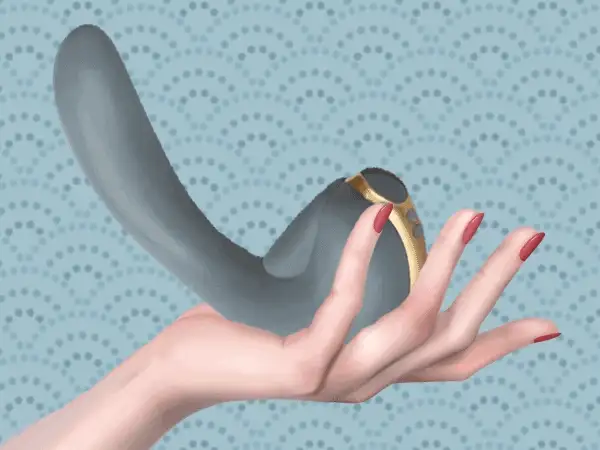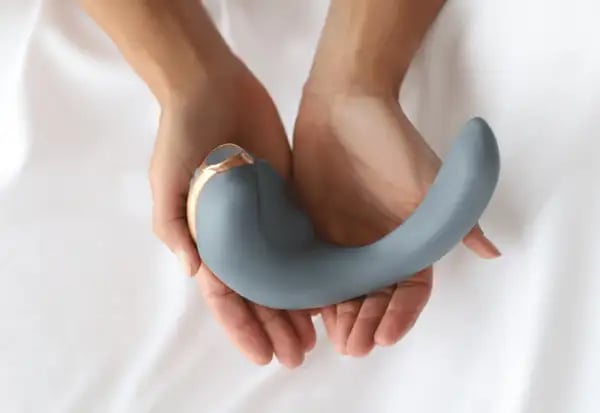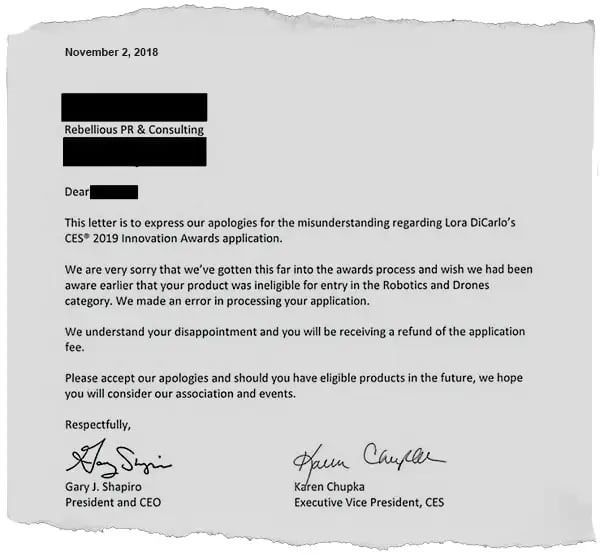“How did that happen?” Lora Haddock found herself wondering after experiencing one of the best orgasms she’d ever had.

This very question sparked the former Portland State pre-med and self-proclaimed physiology nut to launch Lora DiCarlo — a female-led, female-focused sexual health and wellness company — in October of 2017.
Her message of female sex-positivity and empowerment has inspired many, but has also courted some unfair controversy: Last year, the company’s flagship sex toy, the Osé (formerly known as Vela), had its CES Innovation Award stripped away on the grounds that it was “immoral, obscene, indecent [and] profane.”
This, coming from an event that had unabashedly featured male pleasure devices, like blow-job-equipped sex robots, in the past.
I recently spoke with Haddock about the holy grail of orgasms, gender bias in tech, the CES debacle, and how all industries can work together to be more inclusive. And yes, there was some innuendo…
The transcript below has been lightly edited for clarity and length.
WS: What sparked the idea for starting Lora DiCarlo and creating the Osé?
LH: There’s so much knowledge around the male erogenous zones. But there’s not much on somebody with a vagina having an orgasm. I found that there is a physiological process you have to replicate perfectly in order to receive a proper ‘blended orgasm.’
So I saw an opening in the marketplace for a physiologically appropriate design for people with vaginas in the sex-tech space and I decided to… fill it. (Laughs)

Women’s Health has referred to the ‘blended orgasm’ as the “holy grail” of orgasms. What exactly is it, and why is it so rare? Asking for a friend…
A blended orgasm is when you simultaneously stimulate the clitoris and the gräfenberg spot [AKA, G-spot].
I found somewhere in the realm of 12 different vaginal erogenous zones. What our product [the Osé] does is stimulate the whole thing — without the use of vibration — through biomimicry [in this case, a recreation of human motion].
How do you describe the Osé to someone brand new to sex toys?
Unlike normal vibrators, Osé does 3 at once: It stimulates both the G-spot and the clitoris while allowing each and every user to personally customize it to fit within their own anatomy. So it’s an extremely complicated device to engineer.
I wanted to eliminate vibration, make it completely hands-free, and make it something that could be used across a multitude of different users. To make this last one happen, I had to gather physiological data from people with vaginas — because until now, that data never really existed.
How did you compile that data?
I literally asked them, very bluntly: ‘Where is your clitoris?’ ‘Where is your G-spot?’ ‘What does this part of your sexual anatomy look like?’
I’m not shy about [sex talk]. I don’t even blush. And that helped me have very expansive, honest conversations with friends and family. I sent out a survey to a broader audience, and we got close to 200 responses.
And what did you discover?
There’s a range of sizes pertaining to the g-spot and clitoris. And what we did with [the Osé] is design around those ranges in order to accommodate everyone.

So last year, the Osé won a coveted Consumer Electronics Show (CES) Innovation Award. How’d that come about?
We applied in September of 2018 and were accepted. Once accepted, your product gets vetted by the CTA [Consumer Technology Association, which puts on CES], and then you go before a panel of expert judges.
The judges gave us high marks across the board and, in October, they let us know we won the award. We were so psyched. CES is a huge representation of the tech industry as a whole. And we thought our win signified the CTA’s willingness to embrace change.
But then they rescinded the award. What happened?
When you win an award at CES, you also get to be in the showcase. So we were applying for booth space and they flagged us for being an adult product.
‘Flagged,’ meaning what?
We weren’t allowed to have a booth at the exhibitor space.
We didn’t hear anything back for about 3 days. When we finally did, the CTA said they rescinded the award completely, citing that our product was immoral, obscene, profane, and not within CES standards.
That was the most shocking of all to me; I just don’t understand how a product geared toward women’s sexual health and wellness could be obscene.
Okay, but CES has featured many male sex toys in the past…
Right?!!? So arbitrary. How can they justify a male porn VR company and a sex robot that gives blow jobs?
How did you react?
When the original award was rescinded, we fought back hard. I sent back a 3-page letter, and my general counsel sent a 6-page letter, citing everything that was wrong.
We talked about the lack of female representation in their female keynote speakers [there were no female speakers in 2017 or 2018]. We talked about the VR experience, the booth babes, the “blow job android”…
They returned to us with a very short letter basically stating, ‘We’re sorry you got this far in the process, there was a misunderstanding.’ Then, they told us they were not only rescinding our award but banning us from the entire show.

So, what would you like to see CTA and CES do to help change this?
I would love to talk to them and stress that they take a real, hard look at their guidelines. I think there’s still a huge opportunity for the CTA to make changes moving forward.
The fact of the matter is, [the sex-tech space] is incredibly innovative. People are beginning to be more comfortable with gender fluidity and the changes taking place. If the CTA doesn’t change with them, they’re going to get left behind.
What’s the best way to change things at large?
We have to continue to be loud, and not go along with the status quo. When we told other female-run companies that we were going to go public with our story, they were supportive and up in arms for us — but also quietly apprehensive.
Many responses were out of concern that we may get our funding pulled, or that some may think of us as ‘bitchy.’ And, yeah, those are all possibilities, but I am tired of being quiet.
Shortly after your story went public, the CTA opened a $10m diversity venture
Let’s talk about what $10m means: I raised $1.1m alone last year. How much is $10m to an entire group made up of multiple demographics starting businesses?
Putting money into a fund to help lift up an underrepresented group is valiant and wonderful, but when you fail to mentor those people the way white, cis, males get mentored, that’s where these groups lose out.
Until more diverse people feel like they’re being invited to the table and not just having money thrown at them, no impact can be made.

Okay, switching topics: I went down a vibrator rabbit hole last night—
(Laughs)
What surprised me was the range of prices for vibrators. They run anywhere from $5 to $15k. What price range can we expect the Osé to fall under?
We will be in the luxury space of sex-tech: $250-$300.
What’s next for Lora DiCarlo?
We’re releasing [the Osé] this fall, and we have two new products we’re working on right now geared towards couple’s play, as well as a variety of lifestyle products, and a developer’s tool kit for VR.
Can you expand?
Say you have a long-distance partner in New York, and you’re in California and wanted to have a sexual experience with them, you can take one of our products and actually have a haptic feedback sensation when you have that experience with them.
Wow. The futurrrrre…
Yeahhhhhhhhhhhh.
Lastly, what change would you like to see in the tech industry as a whole?
Make it a priority to include diversity in your hiring. Don’t wait for them to come to you.
And also: Listen. There’s a thing called ‘nice guy misogyny’ — someone who pretends to be a champion without really listening. And it’s not just men, women do it too. I’ve even been guilty of it. A lot of it boils down to ego, and once people can find a way to truly put that aside, I think we’ll start to see change.
